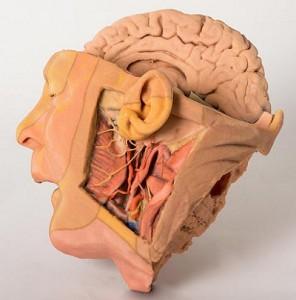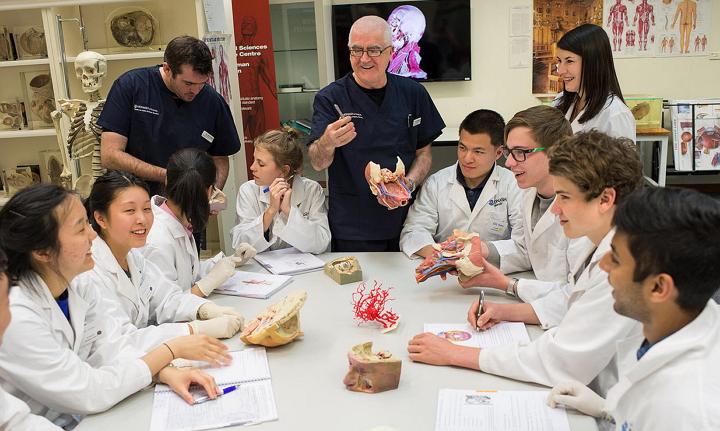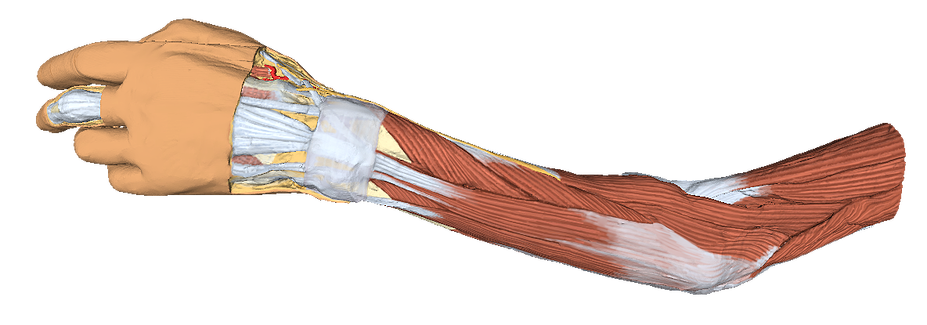Monash University scientists may well have changed the course of medical science with the release of their brilliant 3D Printed Anatomy Series. It’s a kit containing no actual human tissue, but it is an accurate and crucially important tool to teach students the intricacies of human anatomy.
The 3D printed anatomy kit–the result of a cooperative effort between researchers at the Australian university and German anatomical model maker Erler-Zimmer GmbH–first came to our attention last summer, and it’s now available for sale.
The team at the Monash University Centre for Human Anatomy Education produced this alternative to the cadaver, and Professor Paul McMenamin, the director of the Centre, says it will streamline what has been a complicated and expensive proce ss.
ss.
“For centuries cadavers bequested to medical schools have been used to teach students about human anatomy, a practice that continues today,” McMenamin says. “However many medical schools report either a shortage of cadavers, or find their handling and storage too expensive as a result of strict regulations governing where cadavers can be dissected.
“We believe our kit will revolutionise learning for medical students by enabling them to look inside the body and see the muscles, tendons, ligaments, and blood vessels. At the moment it can be incredibly hard for students to understand the three dimensional form of human anatomy, and we believe this kit will make a huge difference – a sort of 3D textbook if you like. “
Medical students have always relied on donated human cadavers to learn anatomy, but the use of properly preserved cadavers is prohibited in some countries and previous versions of plastic models could cost hundreds of thousands of dollars.
Now students will be able to take advantage of these anatomically correct, plastic 3D prints at the fraction of the cost of an embalmed or plastic-modeled replica of a human body. Plastination makes it possible to preserve individual tissues and organs, or even the entire body itself, but it is a time-consuming, complex, and expensive process. In order to make a specimen permanent, water and fats are removed from the tissue and replaced with polymers. Gunther von Hagens found a way to pull liquid polymer into each cell called “forced vacuum impregnation” where a specimen is placed in a vacuum chamber, but the process can take weeks to complete for an entire body.
These 3D prints of the human body have been fabricated from laser scans, MRI imaging, and CT scan data. The series also includes anatomically correct models which would be impossible to visualize in an embalmed body, parts like the vasculature of the brain. After scanning a real anatomical specimen, the body parts can be 3D printed either in a plaster-like powder or in plastic to result in a high resolution, and incredibly accurate, color reproduction.
Each of the 3D printed anatomical structures has been rigorously checked by the team of highly qualified anatomists at Monash, and since the prints aren’t made of actual human tissue, they aren’t subject to prohibitions for transportation, importation, or use in educational facilities without anatomy licensing. McMenamin says the 3D Printed Anatomy Series also avoids “ethical issues” which might be raised by the use of plastinated human remains.
Will these 3D printed anatomy kits one day replace the need for cadavers? Discuss in the 3D Printed Anatomy Kit forum thread on 3DPB.com.
—
Subscribe to Our Email Newsletter
Stay up-to-date on all the latest news from the 3D printing industry and receive information and offers from third party vendors.
You May Also Like
Why Corrosive Resistant Materials Are Important to the Success of 3D Printing Across Industries
The adoption of additive manufacturing (AM) is accelerating across many major industries. As this technological shift unfolds, the importance of corrosion resistance has emerged as a challenge for 3D printing...
America Makes Announces IMPACT 2.0: $6.6M in New 3D Printing Funding
America Makes, the Manufacturing Innovation Institute (MII) based in Youngstown, Ohio, has announced IMPACT (Improvement in Manufacturing Productivity via Additive Capabilities and Techno-Economic Analysis) 2.0, a project call which will...
3D Printing Webinar and Event Roundup: April 14, 2024
We’re starting off the week’s 3D printing webinars and events at ASTM AMCOE’s 11th Snapshot Workshop and MACH Exhibition. Stratasys continues its advanced training courses, SME is holding a virtual...
AMUK Welcomes Airframe Designs as British 3D Printing Industry Grows
While the UK is not the hub for 3D printer and materials manufacturers as other nations, the country continues to excel at the research, development, and application of additive manufacturing...

































